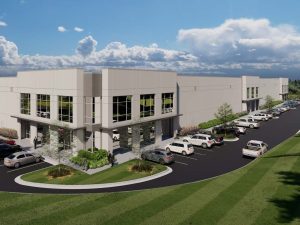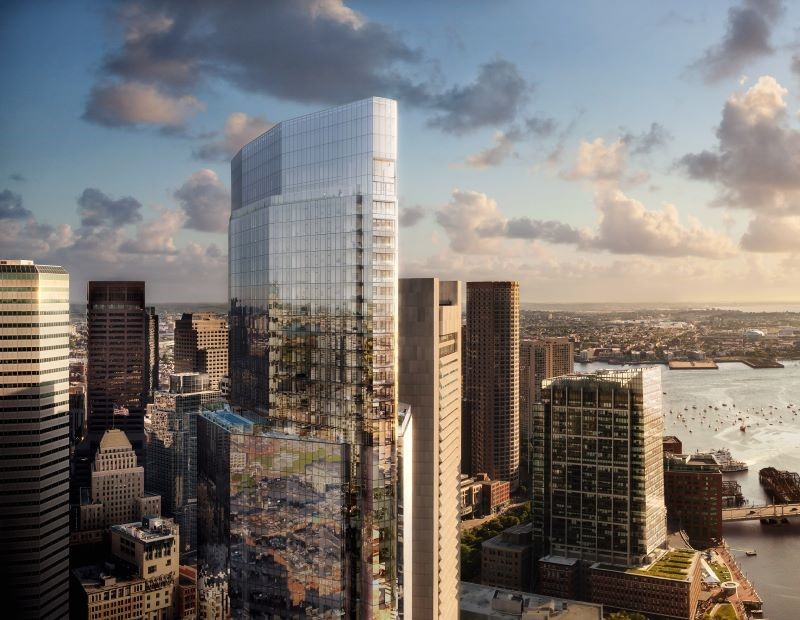CIP Real Estate’s CEO Is Still Keen on Industrial. Here’s Why.
Eric Smyth’s insights into market dynamics that will influence the property type this year.
Amid weakened consumer spending and rising interest rates, high demand for industrial space continues to fuel rent growth, according to a recent CommercialEdge report. As of November, national in-place rents recorded a 650-basis-point year-over-year growth, while the vacancy rate dropped to 3.8 percent. Nationwide, the robust pipeline included 742.3 million square feet of industrial space under construction, which represented 4.0 percent of existing inventory.
With a sizeable industrial footprint across the West Coast and the Southeast as well as Texas, CIP Real Estate has been very active in the space in the past couple of years. Industry veteran Principal & CEO Eric Smyth shared his insights on the industrial sector and revealed his plans for the new year.
READ ALSO: Development Financing Slowdown Is Real
CIP Real Estate acquired more than 2.5 million square feet of commercial real estate space in Texas and Georgia in late 2021, with the bulk of the properties across Dallas and North Dallas cities. What made the industrial assets of the portfolio so appealing?
Smyth: The Dallas North Portfolio (DNP) was a rare opportunity to acquire multi-tenant industrial park assets in aggregate, particularly in submarkets where replacement or development is basically impossible due to lack of industrial-zoned land and cost of construction. We were also able to purchase DNP at a fair price point and to expand our management presence in Dallas-Fort Worth—one of the prime markets for our company.
You announced your intention to upgrade several of the buildings in the DNP portfolio. How did you tackle rising building material prices last year?
Smyth: The business plan for DNP included about $20 million of capital expenditures across the portfolio, most of which is for interior upgrades but a portion of the total cost will be for exterior cosmetic improvements as well. With the exception of roof and HVAC replacement costs—which were higher in 2022 than in prior years—the cost figures for the balance of the capital expenditures are holding steady. Additionally, the project we acquired in Atlanta—Mansell Commons—had a significant capital program for exterior improvements—the total cost for this scope of work also came in on budget.
What type of industrial assets are most in demand in the Atlanta and Dallas-Fort Worth markets today? How do the two markets compare?
Smyth: We are finding that all unit sizes are experiencing steady tenant demand, especially for units with superior warehouse amenities and limited office finish in these markets. While Dallas-Fort Worth has been an excellent market for our company, Atlanta has probably been the stronger market in 2022, with double-digit rental rate growth across all unit sizes in our 1.6 million-square-foot portfolio.
You are also working on expanding a 1.1 million-square-foot industrial project in Norcross, Ga. What made the Atlanta market a frontrunner for adding new industrial space to your portfolio?
Smyth: Atlanta has been very active from a tenant demand perspective and our Gwinnett Commons portfolio is a prime example: We are currently constructing two 90,000-square-foot industrial buildings, with one project being already preleased and the other will be leased prior to completion as well. The balance of this portfolio is 100 percent leased, with rental rates above our original pro forma.
Supply chain resiliency remains a goal for many real estate companies. How much do you expect this issue to impact your activity going forward?
Smyth: Fortunately, with the exception of HVAC units and having to buy steel a year in advance—for our two Atlanta construction projects—our product type in all markets has not experienced tremendous obstacles in materials due to the supply chain. However, we do expect that the bottlenecks will decrease in 2023 and the supply chain for equipment and materials we use in our portfolio will be less of an issue.
Have you noticed any changes in industrial tenants’ preferences, considering the current economic landscape? Any changes in preleasing behavior?
Smyth: Not yet. Demand in most markets has remained consistent, but we are obviously watching our market reports and surveys very carefully for signs of a slowdown and dampening of demand. Again, the industrial suites, with minimal office, with premium warehouse specs remain hard to find in most markets, so even with a softening of demand rental rates should stay elevated for the best product.
READ ALSO: Industrial Subleasing Strategies
What are your expectations for the industrial sector in 2023? How do these expectations translate into your long-term objectives?
Smyth: Frankly, that is the question on everyone’s mind: What will the industrial real estate map look like in 2023? Right now, there is a large bid-ask spread, with sellers still attempting to achieve higher pricing, but buyers are now very “picky” where they are allocating capital. Assuming interests remain at their current levels or increase in 2023, we forecast that sellers will become more realistic on valuation, and transactions will occur at lower price points.
We also predict that many ownerships that have projects with low fixed-rate debt and no near-term expirations will elect to hold assets into 2024 or 2025 to see if rates moderate with a decrease in inflation, so deal volume may be lower in 2023 than in prior years.
Is there anything else you expect to happen in the industrial market?
Smyth: It’s important to note that most markets have vacancy rates well below 5 percent and replacement costs for industrial product are only escalating. When you add in that prime land sites remain difficult to obtain, we believe supply in all unit sizes will remain tight for infill locations in premier MSAs. Therefore, we do not foresee rental rates decelerating and may continue to increase faster than inflation through 2024.









You must be logged in to post a comment.